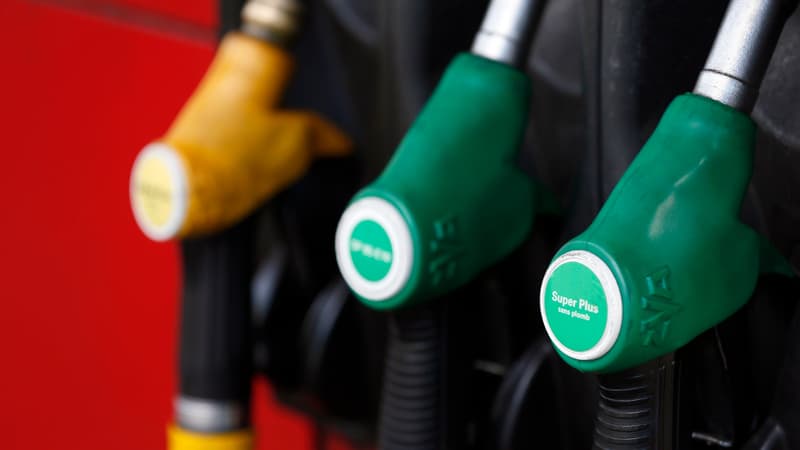France is still far from its targets in terms of reducing its demand for petroleum products. This is one of the main lessons of the annual conference of the French Union of Energies and Mobilities of the Petroleum Industries (Ufip EM) that took place this Thursday.
“Relatively high oil prices”
The year 2022 will have been marked by a high level of the price of a barrel of Brent that will have closed at an average of 101 dollars throughout the year, compared to 70 dollars in 2021, with a peak of 123 dollars in particular in June . In this context of high volatility linked to the war in Ukraine, gross refining margins skyrocketed from March: from 14 euros per liter in 2021, they stood at 101 euros in 2022 with a peak of 189 euros per liter in October .
Demand is falling but not enough
Before Covid, the annual demand for petroleum products in France was 73 million tons. After a drop due to the pandemic, it amounted to 69 million tons in 2022, which represents a decrease of around 5%.
However, if we take into account the only demand in the aviation sector that has not yet fully recovered to pre-Covid levels, this drop is around 3%. “The multi-annual energy program published in 2020 foresees an annual reduction of 5% per year in each fossil fuel by 2028, but France is only reducing its demand for petroleum products by 1% per year,” says Olivier Gantois, who forecasts that the Oil will continue to be the main energy consumed in France in 2022 (in 2021, oil derivatives represented 41% of the final energy consumed in the country).
In detail, total highway fuel consumption increased 2.2% in one year, but remained 1.6% below 2019. Compared to 2021, unleaded gasoline deliveries increased 11%, while that those of diesel fell by 0.4%. Olivier Gantois sees it as “a fundamental movement”: “Of the registrations of new light vehicles, diesel engines accounted for 16% in 2022. It is structural and therefore there is an impact on the demand for unleaded gasoline.” This difference is explained by a sharp rise in the price of diesel since last March, which ended up recovering the difference with unleaded despite a difference of 10 cents in tax between the two products.
A 40% drop in demand for fossil products by 2035
Before the end of the year, a bill should be presented as part of a review of the Energy-Climate Strategy with the aim of reducing the consumption of fossil fuels by 35% in 2028 compared to 2012. A In this sense, Ufip EM asked IHS prospective experts to conduct a study that forecasts a drop in demand for fossil products by 40% by 2035.
This decline will be especially marked in diesel and will be accompanied by a gradual rebalancing between the gasoline and diesel markets. In addition, demand for aviation fossil fuels and non-energy petroleum products (petrochemical naphtha, lubricants, bitumen) should be stable.
But this fall in demand must be complemented with an electrification of uses and developments are already taking place in this regard. The transition of the fleet from light to electric vehicles continues with 1.1 million electric and plug-in hybrid vehicles registered at the end of last year: in 2022, these types of vehicles represented 23% of registrations.
At this level, the government’s targets have not yet been achieved with only 80,000 terminals instead of the desired 100,000. On the other hand, all motorway service stations should be equipped with charging stations in the coming weeks, while 78% of them were in December.
Develop the production of low-carbon liquid fuels
Above all, the sector will need to initiate a rapid decarbonisation of transport, in particular through an acceleration in the field of low carbon liquid fuels (CLBC). In order to comply with the incorporation obligations, its production must double in just over 10 years, from 4 to 8 million tons per year in 2035.
Whether first generation biofuels, advanced (from raw materials), synthetic or even made from recycled carbon, CLBCs have the advantage of reducing carbon footprints by 75-90% compared to fossil fuels . They should benefit from a large part of the €20 to €45 billion of investment planned for 2035.
On the other hand, the production of these CLBC requires additional raw material requirements. “Additional biofuels will be produced from existing or new resources of renewable and sustainable raw materials of agricultural or forestry origin or derived from fats or animal waste”, details the Ufip EM, which specifies that 11.2 million tons of materials will be needed non-food premiums by 2035, which corresponds to less than 15% of the available resource.
For its part, the production of synthetic fuels will use renewable and low-carbon hydrogen: “for the production of hydrogen by electrolysis alone, the amounts of renewable or low-carbon electricity required are estimated at 55 TWh in 2035, or around a quarter part of renewable electricity production.
To move in this direction, the sector is increasingly committed to low-carbon industrial platforms. Similarly, you can count on several industrial projects announced or even already started in France, such as the Grandpuits and La Mède platforms for biofuels. As for carbon-free hydrogen, the Masshylia project is promising, as is the plan to install 100 hydrogen stations for heavy-duty vehicles. Finally, the Seine Axis will be a reference in terms of CCUS (CO2 capture, use and storage) technology, as will the future Plastic Energy plant in Port-Jérôme in terms of recycling.
Don’t panic at gas stations
This Thursday, the president of the professional union Olivier Gantois wanted to be reassuring about the supply of service stations while blockades occur this week.
“Five fuel depots out of 200 were still blocked last night, so the amounts of fuel shipped were normal,” he said, referring to a national shortage rate of 7% which, however, doubled in Île-de-France. and in the western departments. from France.
Source: BFM TV


